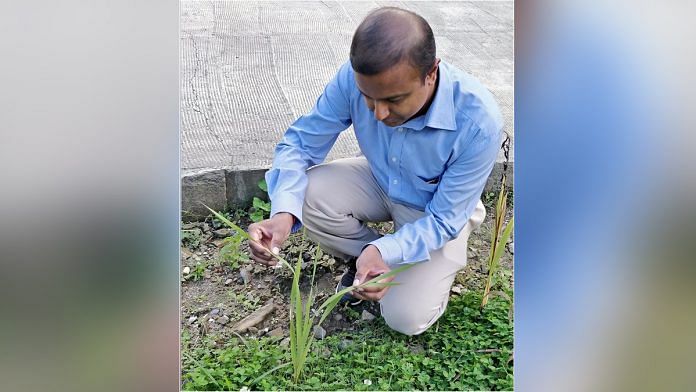The innovation from IIT-Mandi can help tackle the world’s impending water crisis.
Bengaluru: Researchers at Indian Institute of Technology (IIT)-Mandi have developed materials that can harvest water from fog and mist in a sustainable manner.
To devise the materials, a team led by Dr Venkata Krishnan, an associate professor of chemistry at the School of Basic Sciences, studied the structures of plants and animals from desert areas that capture water droplets. The results of their research have been published in journals like Flora, ACS Sustainable Chemistry and Engineering, and Biomimetics.
Also read: The latest bright idea from an IIT lab — cars that run on water and aluminium
The world is in the midst of a grave water crisis, and scientists all over the world are trying to find innovative and sustainable ways to tackle this problem.
“Access to clean water is one of the biggest problems in the world today,” said Krishnan. “Nearly 12 per cent of the world does not have access to clean drinking water. This is a problem we wanted to find a potential solution to for India.”
The process of borrowing designs from nature to make our sustenance more efficient is called biomimetics, or biomimicry. We see examples of it all around us, including aircraft, which are inspired by bird and bat wings.
To understand how flora and fauna trap water from fog and mist, Krishnan, his student Vipul Sharma, and their team studied species like ferns and beetles.
For example, the Darkling beetle of Africa’s Namib desert captures water from the atmosphere by a process called ‘fog basking’. It thrusts its rear end up in the air, and a million tiny grooves on its wings act to condense water. The beetle’s body is made up of a water-resistant material, much like our non-stick teflon. This prompts the water to flow from its rear end to its mouth.
Other desert species, especially cacti, have evolved to capture water from the air and store it in their fleshy stems, safe from evaporation. The bumps on cacti body trap the water droplets through condensation, and V-shaped spines guide the flow of water into the plant’s body.
Himalayan inspiration
Sharma shortlisted three effective designs for the research after conducting a survey of Himalayan flora.
One of them, Bermuda grass, has two interesting structural traits that the researchers noticed: Conical spines arranged neatly with sharp edges that trap water droplets, and seedheads organised in a pattern that enable the trapped water to coalesce and trickle in the desired direction.
The fern Dryopteris marginata, meanwhile, has a detailed, intricate system of channels where captured water droplets quickly travel and spread before evaporation.
The third plant is the dragon lily (gladiolus dalenii), whose leaves have surface patterns that are highly efficient at harvesting water in a similar manner.
“All these plants have both hydrophilic and hydrophobic parts,” explained Krishnan. “The former attract and trap water, while the latter repel the water, causing small droplets to join and coalesce into bigger ones. They are then channelled into the right direction.”
Krishnan’s team then set out to replicate these, and, using polymers that are both viscous and elastic, developed materials that could capture and channel water.
Also read: How an IIT team is helping put 1,000 villages on the map of India
They layered micrometre and nanometre scales on the surface of the materials — like the plants had — using a technique called soft lithography. This enabled them to first use a plant to create a mould, and then replicate the design on a polymer.
The innovation proved highly efficient in trapping water, the researchers said, harvesting up to 230 per cent more water than a flat polymer material. The current design, if scaled, offers a large water-capture potential, especially in areas prone to fog. During dense fog, a one-square-metre material can capture nearly four litres of water.
“We have applied for a patent,” said Krishnan, “When we get it, our designs can then be used commercially to solve water problems in applicable areas.”



